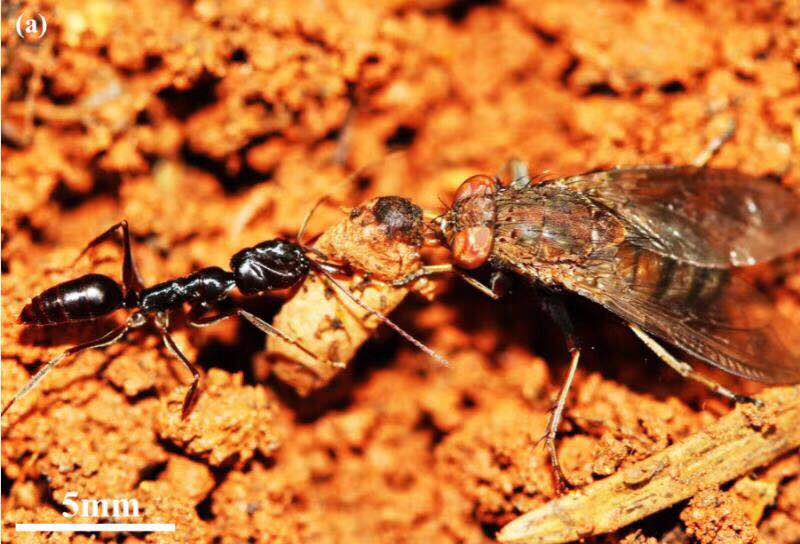The genus of blow flies Bengalia includes more than 70 species, which are found in the world’s African and Asian tropics. Bengalia flies are best known for their remarkable highwayman- like habit of stealing ant eggs, larvae, and pupae, as well as various prey being transported by the ant workers. The flies also attack termite workers emerging from damaged nests.
Another group of combative insects, the trap- jaw ants (genus Odontomachus), have specialized spring- loaded mandibles that snap shut at some of the fastest speeds in the animal kingdom (64 m s?1) and generate forces over 300 times their body weight. More than 70 Odontomachus species, found in the Asian and American tropics, are known for their powerful mandibles, used for predation and defense.
What happens when two such fierce insects (whose geographic ranges show considerable overlap) encounter each other? We observed foraging B varicolor flies pouncing on disturbed O monticola colonies to steal and consume ant pupae. The predatory fly can easily subdue the ant, which is occupied with carrying its offspring in its power- amplified mouthparts; what’s more, the ant’s poisonous sting is unable to reach the fly.
Yet the causes and consequences of this fly–ant interaction remain unclear. Can the flies detect alarm and/or trail pheromones from the ants? What are the fitness costs to the ants of being hijacked? The answers likely depend on local abundances of both insects. (The Ecological Society of America)

(Image by KIB)

(Image by KIB)

Contact:
YANG Mei
General Office
Kunming Institute of Botany, CAS
Email: yangmei@mail.kib.ac.cn
(Editor: YANG Mei)




